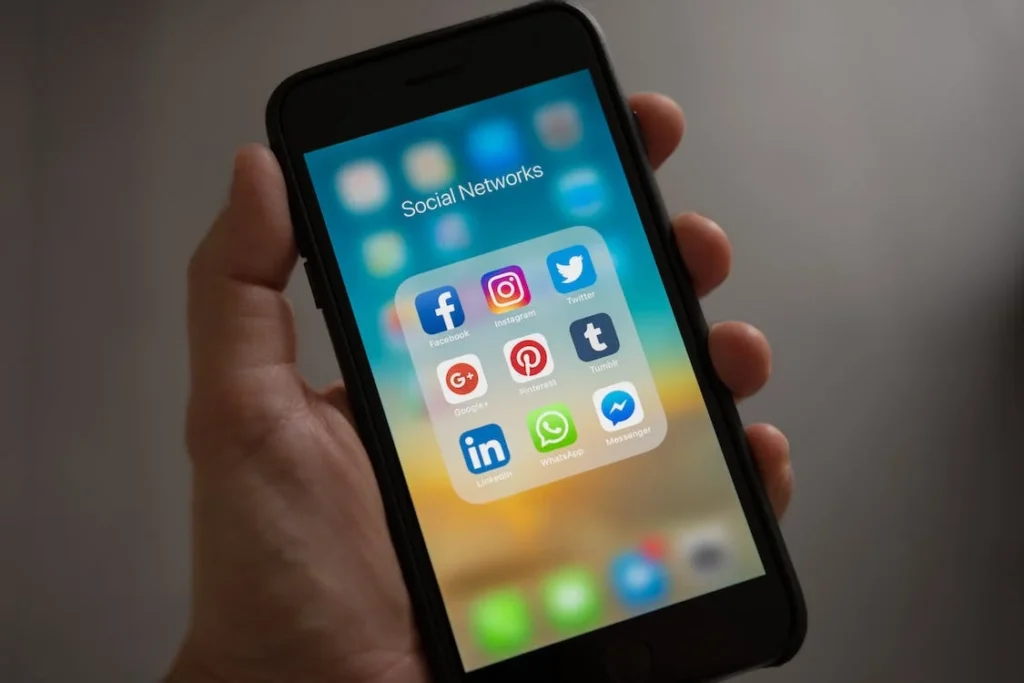Understanding Customer Experience
Importance of Customer Experience
These days, if you’re in business and you haven’t caught onto the magic of customer experience (CX), you might be living under a rock or perhaps an uninspired corporate cubicle. Improving CX isn’t just some fad. It’s like that secret sauce for customer loyalty, cutting costs, and riding the growth wave. Believe me, when people say, it has power, they’re not kidding.
Here’s a mind-blower: mess up just twice with a customer, and poof—brand loyalty gone! That’s like betting on your favorite team and, well, they fumble it twice in a row. And speaking of priorities, 84% of folks swear they value experiences more than what’s in the package. Give ’em a forgettable experience, and they’re showing you the door faster than they can say “where’s my refund?”
Impact of Customer Experience on Revenue
Now, let’s get to the money talk—a favorite topic for most. Great CX isn’t just about smiles and good vibes (though those are nice too). It’s a real cash cow. Picture a business raking in a billion a year. Now, with just a little nudge in CX, an extra $823 million can roll in over three years. It’s like turning that loose change in your couch into a small fortune.
But wait, there’s more! Polishing up the customer experience doesn’t just line your pockets. It trims down those pesky operational costs too. Think about it: happy customers need less convincing to stick around, cutting down the cash you burn on serving them. So, not only are they coming back for more, but your costs go down, and your profits shoot up. It’s the kind of math any CEO or average Joe would celebrate.
| Metric | Impact |
|---|---|
| Average Revenue Increase (3 years) | $823 million for a $1 billion company |
| Customer Retention | Improved loyalty and repeat business |
| Operational Cost Reduction | Lower cost to serve |
Putting the spotlight on customer experience shouldn’t just be a blip on your radar; it should be your North Star. Use the fancy stuff like customer journey mapping and a killer customer experience strategy to carve your path. Sprinkle in some customer experience metrics, and you’re no longer just guessing what works—you’re playing to win.
Data-Driven Decision Making
When it comes to business, making sense of numbers can really amp up the customer experience. This little guide is your go-to for nailing the job of gathering, looking at, and using data to cook up fresh strategies.
Collection and Analysis of Data
Let’s talk numbers. Getting your hands on data is like discovering what makes your customers tick. I make sure to keep my eyes on KPIs that matter in their journey with us. Here’s my plan of attack:
- Know What’s Driving the Bus: Line up your data hunt with your big business dreams.
- Pinpoint Where to Dig: Think of spots like customer reviews, how the website’s doing, or the latest sales figures.
- Tidy It Up: Arrange that data so it’s easy to check out without getting a headache.
- Dive into the Deep End: Use tech tools to put the puzzle pieces together.
- Put It to Work: Make sure the insights are more than just numbers—they should stir up some new, smart moves.
| Step | Action |
|---|---|
| 1 | Know What’s Driving the Bus |
| 2 | Pinpoint Where to Dig |
| 3 | Tidy It Up |
| 4 | Dive into the Deep End |
| 5 | Put It to Work |
Following these steps means I can make smarter choices, no more gut feelings running the show (Asana).
Turning Data into Actionable Insights
Once the numbers make sense, it’s time to get cracking. Swapping out wild guesses for solid facts not only spots trends but also sparks clever ideas that’ll shape your plans (Asana). Here’s what you gain:
- Facts Talk: Decisions based on what’s real, ditching personal whims.
- Finding Mystery Gaps: Data can shed light on what’s missing in understanding your customers.
- Smarter Targets: Creating super-clear goals that actually mean something.
- Tweaking the Machine: Switch up operations for a smoother ride.
Say, for example, the data shows a group of customers love getting a personal touch in communication. That’s my cue to jazz up marketing to make them feel extra special. This could mean a makeover for campaigns or spicing up my customer experience strategy.
Betting on data brings logic into play, making sure steps toward upping customer experience are no shot in the dark. This grand scheme improves not just how we click with folks but also keeps them around longer, boosting the bottom line. Putting in this bit of effort means happier customers and stronger bonds that last.
Employee Empowerment
Employee Engagement and Empowerment
I’ve noticed that giving employees a sense of control and power over their work really boosts their commitment and enthusiasm. When employees feel empowered, they’re super engaged, scoring around the 79th percentile, while those who don’t feel empowered only hit about the 24th percentile. Clearly, there’s a strong link between feeling empowered and wanting to dive into work wholeheartedly.
To build that vibe where everyone feels supercharged, I make sure we constantly cheer on our team and celebrate their growth. Saying “well done” isn’t just a nice gesture—it’s a game-changer. Companies that are big on recognition see their engagement levels soar. This means everyone’s more likely to repeat the behavior that gets the high-fives, creating an upward spiral of energy and productivity.
Benefits of Empowered Employees
The good vibes from empowerment don’t just stop at keeping spirits high—they show up on the bottom line too. Teams buzzing with motivation can make a company up to 21% more profitable. On the flip side, places struggling with disengagement are losing crazy amounts—between $450 billion and $550 billion annually in the U.S. alone. Yikes!
Pouring effort into development programs is key to making everyone feel they can take on the world. An eye-popping 87% of millennials and nearly half of all employees crave this growth (Achievers). By offering up paths for learning and progression, we’re not just empowering folks—we’re keeping them happy and sticking around.
I also can’t stress enough the power of just talking things through. Keeping conversations open and honest builds trust. When everyone feels their voice matters, they’re more into what they do and how they contribute. This atmosphere of openness and teamwork is what drives us towards smashing our goal of delighting customers at every turn.
For a deeper dive on how to craft an awesome customer experience strategy, check out our article on customer experience strategy.
Personalization for Improved CX
If there’s one thing businesses gotta nail, it’s keeping the folks who shell out the cash happy. In my time on this blue marble, I’ve found that making things personal can turn a lukewarm customer into a loyal fan. I’m talking about the magic of personalization.
Personalization Perks
Imagine losing almost a third of your customers just because they feel like they’re getting the cold shoulder. That’s the reality many businesses faced back around 2016 when folks ditched them for not adding that personal touch (Lumoa). It’s like forgetting someone’s name over and over—eventually, they’ll find someone who remembers.
Here’s why making things personal pays off:
- More People Stick Around: Once consumers feel noticed, they’re more likely to hang around and chit-chat with your brand.
- Happier Campers: When you get offers that actually suit your vibe, it feels pretty sweet.
- Die-Hard Fans: A little personal attention can plant that warm, fuzzy feeling people get for their favorite brands, making them come back like clockwork.
Half of online shoppers say they notice when the deals are just right, and close to half admit they’re more inclined to drop by websites that know them by name (Lumoa). That little bit of extra attention can turn a blah experience into something memorable.
Success Stories of Personalized CX
Now, let’s dish out a couple of success stories about companies that got personal and reaped the rewards:
Amazon: The big A practically wrote the book on personalized shopping. By nudging folks with spot-on recommendations based on what they’ve already snapped up, they’re winning smiles and loyalty hand-over-fist.
Coca-Cola: Remember the “Share a Coke” campaign where they printed your name on the bottle? That wasn’t just cute—it was genius. It spiked their sales in the land Down Under by 7% and snagged a 2% rise stateside, showing just how much personalized marketing can stir up the crowd (Lumoa).
These stories show that adding a touch of the personal can make things pop, boosting interactions that are way more meaningful. If you’re smart, you’ll weave personalization into your customer experience plans, and watch your business transform while your customers keep smiling.
Leveraging Customer Feedback
Importance of Customer Feedback
I’ve figured out that customer feedback is more than just suggestions; it’s like striking gold. This info helps me tweak and refine every interaction with my customers over time. Knowing how folks feel about my stuff decides the next steps I take to keep them happy as clams.
It’s like having a road atlas when you’re driving—following customer feedback lets me make smart moves that cater to their needs. Setting up a good strategy for feedback is a must if I want to gather the right pointers and make changes that matter.
Methods for Collecting Feedback
Grabbing useful feedback depends on how I go about it. Here are some ways that’ve always given me great insights:
| Method | What’s It About? |
|---|---|
| Customer Surveys | Ask targeted questions to get a real sense of what customers think and feel. |
| Email Feedback Forms | Quick emails to learn how they felt right after a chat or purchase. |
| Usability Tests | Watch how people use your stuff to spot where they hit walls. |
| Customer Interviews | Taking time with customers to dig deep into their experiences. |
| Social Media Engagement | Pay attention to and interact with folks on social sites. |
Mixing these methods gives me a solid feedback system. Not only does it help gather vital insights, but it also builds trust and makes things transparent between me and my customers. Sharing this feedback with my team means that everyone is on the same page towards making things better for our customers.
If you’re curious about how feedback shakes up customer satisfaction, check out the scoop on customer experience metrics and customer experience automation. Getting a knack for using different feedback channels will give my business that extra edge to up the game with customer interactions.
Measuring Customer Experience
In my quest to make every customer’s journey a little smoother, I focus on crunching numbers like customer retention and churn rates. These facts aren’t just statistics—they’re a peek into whether folks are sticking around and smiling or planning their exit strategy.
Customer Retention Rate
It’s like a popularity contest, but in numbers. If customers keep coming back, that means you’re doing something right in their book. Businesses dream of an 85% slumber party return rate. When that happens, they’re thrilled because it shows people are happily riding the wave with them. Keeping the gang together means a steady flow of revenue, which is crucial if you want to grow like a well-watered plant, rooted solidly for the future (Glassbox).
| Retention Thingamajig | What It Means |
|---|---|
| 85% or more | Crushing it! Customers love you |
| 70% – 84% | Doing pretty well |
| Below 70% | Yikes! Time for a recheck |
To pump up those numbers, it’s all about nailing service and making the whole experience a breeze. Getting into the nitty-gritty, like customer journey mapping, shows where the cracks are, so you can pave them over with great care and attention.
Customer Churn Rate
Consider the churn rate as the leakage in a leaky bucket. If people are bailing out, it’s a sign to take action. This rate shows the percentage of customers ditching your gig within a certain timeframe. Stopping the exit parade is paramount because it’s typically cheaper to keep a customer than to go hunting for a new one (Glassbox).
| Churn-o-Meter | What It Means |
|---|---|
| 5% or less | You’re golden; low leakage |
| 6% – 10% | Slight dribble; tighten the faucet |
| Over 10% | Whoa, plug those holes, stat! |
To lower departure rates, I jazz up the touchpoints ensuring everyone’s ride is as bump-free as possible. By tweaking the customer experience strategy, I aim to catch the grumbles before they evolve into a no-show next time around. Listening and learning through feedback forms or behavior snapshots help me spot bumps before they become potholes.
Overall, retention and churn rates are like the backstage passes to understanding how smoothly my customer experience show is running. Regularly peeking into these insights allows me to tweak, fix, and delight, boosting satisfaction and loyalty along the way.
Customer Satisfaction Metrics
In my endless quest to make our customers grinning like Cheshire cats, I’ve got two trusty sidekicks: the Customer Satisfaction Score (CSAT) and the Net Promoter Score (NPS). These are like my GPS for gauging how happy (or not) our customers are with us.
Customer Satisfaction Score (CSAT)
The CSAT is a quick and dirty way of figuring out if customers are as happy with our products or services as kids on Christmas morning. It’s all about asking a simple question, “How was the ride?” or something along those lines, on a scale that puts things into perspective—1 being “Nah, not impressed” to 5 being “Yeah, totally stoked!” This direct input is gold for tweaking what we do so that our offerings hit the mark (Glassbox).
| CSAT Scale | Score Interpretation |
|---|---|
| 1 | Not happy at all |
| 2 | A bit meh |
| 3 | So-so |
| 4 | Pretty pleased |
| 5 | Over the moon |
Having an eye on the CSAT scores over time is like having a secret map that shows where we gotta step up our game to make a customer’s day brighter and better (customer experience strategy).
Net Promoter Score (NPS) Benefits
NPS is another superhero in my toolkit for figuring out who’s singing our praises and who’s out there grumbling. It’s all about asking, “How likely are you to drop our name to your pals?”
With NPS, customers fall into one of these zones:
- Promoters (9-10): These are our groupies, spreading the good word and fueling our growth.
- Passives (7-8): They’re sitting on the fence, happy enough but not singing in the choir. Competitors might snatch ’em if we’re not careful.
- Detractors (0-6): At the bottom end, these folks aren’t in our fan club and might go vent their frustrations elsewhere.
Scoring high on NPS means we’re doing something right, leading to more thumbs-ups, loyal followers, and ringing cash registers.
| NPS Score Range | Customer Loyalty Description |
|---|---|
| 0 to 30 | Could be better, lots to fix |
| 31 to 60 | Halfway there, loads of potential |
| 61 to 100 | Absolutely crushing it, fans galore |
CSAT and NPS are my guiding lights in making the customer journey smooth and enjoyable (customer experience management). With these by my side, I can keep adjusting the sails and steering our ship towards greater satisfaction and success.



















